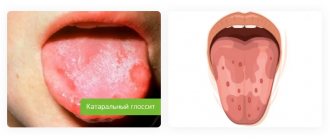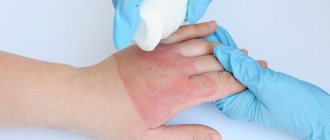December 7, 2021
We've thought of everything: the perfect couple of days in Almaty
Read November 26, 2021
I'm in Almaty, and you?
Read November 18, 2021
More please: how to save money when traveling
Read November 16, 2021
Russia resumes flights with five countries it almost never flew to before
Read November 11, 2021
The authorities want to introduce QR codes for traveling around Russia. How will it work?
Read November 8, 2021
How to have fun in Goa
Read
Jelly floating in the sea seems completely harmless, but that is until you come into contact with it. Jellyfish is insidious and dangerous, unpredictable and sudden. How to get out of the water dry and unstung and what to do if the battle is lost, in our new instructions.
General information
It is no secret that jellyfish are predators and are capable of stinging. Their tentacles are equipped with a special type of stinging cells - cnidocytes , which they need to hunt various prey, as well as to protect themselves from enemies.
The main food of these mobile hydroforms of cnidarians is zooplankton, incl. larvae, eggs and small fish representatives. Jellyfish, even weighing more than a hundredweight, are not able to withstand the sea current, therefore they are classified as plankton. Their type of movement is reactive - thanks to the contractions of the muscles of the walls of the umbrella, they are not capable of attacking a person.
The structure of a jellyfish
Involuntary contact with the smooth gelatinous parts is not dangerous to the health and integrity of the skin, while the stinging tentacles pose a real threat. There are several types:
- penetrants - are pointed threads that can be injected into the victim’s body for subsequent injection of burning toxic substances;
- glutinants - threads of a fairly long length with a sticky coating, their function is to stick to and immobilize the victim;
- volvents - have the appearance of short threads that are also capable of entangling the victim.
ICD-10 code: X26 Contact with poisonous marine animals and plants.
"AiF. Health" recommends
If you find yourself during a jellyfish attack while on vacation, you should visit your local pharmacy and buy the necessary first aid supplies, just in case.
Carefully monitor the condition of the victim, especially if it is a child. If he develops shortness of breath, nausea, diarrhea, or cough, see a doctor immediately! The toxic effect of jellyfish toxic substances is unpredictable.
Find out in advance where you can go for medical help so you don’t have to rush around if you suddenly need it.
Pathogenesis
Only some species of box jellyfish, scyphojellyfish and hydromedusas can cause serious injuries to humans, although it is generally accepted that all adult individuals of the medusoid generation are distinguished by a developed structure of stinging tentacles that contain poisons. Even after the death of an individual, the poison remains toxic for some time, so playing with cornmouths washed ashore can also trigger a number of dangerous pathological reactions.
Zootoxins present in stinging cells are biologically active substances that can actively interact with biological structures; they are alkaloids , histamines , various enzymes and their inhibitors .
Better yet, warn!
Few people know: jellyfish thrown ashore by a storm retain their stinging properties for some time. So those who like to walk along the edge of the sea should wear closed beach slippers. Do not allow children to dig in the sand near the water.
However, most often the victims of burns are teenagers and teenagers who, for fun, pick up jellyfish and throw them at each other. Explain to your offspring how this could end. Burns in the face area are especially dangerous - they can cause eye damage and severe damage to the skin, which sometimes leaves scars that are not easy to get rid of.
Question answer
What to do if you are stung by a jellyfish. Memo
Classification
Depending on the effect of zootoxin, different jellyfish stings are distinguished:
- neurotoxic – having an effect on the nervous system;
- cytotoxic (dermatonecrotic) – cause local damage to cells and tissues;
- cardiotoxic – disrupting and paralyzing the functioning of the heart;
- hemolytic - destroys red blood cells - erythrocytes .
According to the severity of the jellyfish burn, it can be:
- mild (symptoms appear briefly and fragmentarily);
- average ( toxicosis has periods of exacerbation);
- severe (signs of intoxication are more pronounced and can last from several hours to a whole day).
Causes
The cause of pathological processes as a result of bites (more correctly, injections) of jellyfish are the zootoxins contained in their stinging tentacles. The most famous among them:
- neurotropic poison of the cross;
- nerve poison of physalia (intoxication is accompanied by severe pain, suffocation, convulsions and disappears after 1.5-2 hours);
- sea wasp venom, which can instantly paralyze the heart muscle, also has hemolytic and dermatonecrotic effects;
- the venom of chryazora or sea nettle consists of various enzymes, prostaglandins , histamine , serotonin , kinin-like substances and proteins with lethal cardiotoxic, hemolytic and dermatonecrotic effects;
- The poison of the Black Sea and Azov aurelias and cornerotes - although not deadly, poses a threat to the lives of children, allergy sufferers, for people with heart problems; if it comes into contact with mucous membranes (for example, the eyes), it can cause strong inflammatory reactions.
Watch out for jellyfish
Every third tourist who vacationed at the sea has an unpleasant experience of meeting jellyfish. The consequences of contact with a jellyfish can be very unpleasant: burns, sharp pain, redness of the skin - this is a minimal bouquet of pleasures.
It is better to always remember the rules for providing first aid to someone who has received a jellyfish burn, so as not to find yourself in a situation where you don’t know what to do. After all, the consequences of a jellyfish sting can not only ruin your entire vacation by the sea, but can also be very deplorable.
So, a jellyfish sting can be one of the most incredibly painful stings you will experience. The degree of discomfort depends on the specific species of jellyfish. Jellyfish stings range from mildly annoying to fatal. Although scientists believe that more than 1,000 different species of jellyfish live in the seas and oceans of our planet, only 350 species of jellyfish have been studied and identified. The good news is that only 10 percent of known jellyfish species actually sting.
Jellyfish of the Mediterranean Sea In the Mediterranean Sea and other seas there are 3 main types of dangerous jellyfish, the burns from which cause severe pain when touched and can also cause an allergic reaction:
- Pelagia - a small lilac sting,
- Chrysaora - sea nettle,
- Cyanea - hairy jellyfish and others.
Jellyfish Pelagia Pelagia (Pelagia noctiluca), also related to the disc jellyfish, exists only in the jellyfish stage. Its edge of the umbrella is divided into eight petals, where the sense organs are located - vision, rudimentary sense of smell, as well as organs of balance. This is a small jellyfish, rarely exceeding 12 cm in diameter.
The umbel is bell-shaped, the color of the dome can vary from purple to brownish-red. The frilled edge of the bell is equipped with eight thin tentacles armed with stinging cells, and four oral lobes extending from the mouth opening.
The name of this jellyfish is translated from German as “evening light” due to the variegated color of the dome and the ability to emit light when touching any objects under water. Pelagia venom is dangerous to humans and can cause burns and even shock.
Chrysaora - sea nettle The scyphoid jellyfish Chrysaora, called sea nettle for obvious reasons and living in tropical seas, can cause heart failure, not to mention dermatitis and necrosis. Behind the jellyfish drifting on the waves stretches a long trail of thread-like tentacles, spread out so widely that you can literally get stuck in them without noticing the jellyfish’s bell itself, pulsating somewhere to the side.
The poison of cyanide does not pose a mortal threat to humans, but can cause very severe burns and the appearance of a rash on the body at the point of contact with its poisonous tentacles.
Fishermen often suffer from this jellyfish when they try to pull it out of their nets, resulting in severe poisoning. It is better not to get stung by the cyanide jellyfish.
Another good news is that jellyfish stings are extremely rarely life-threatening. The bad news is that when a jellyfish stings, it leaves thousands of incredibly small stings in your body that cling to your skin and release venom. Most often, this poison causes mild discomfort or painful redness.
How does a jellyfish sting?
Most jellyfish hide in their seductive jelly-like body stinging cells - nematocytes, which produce the poison necessary for jellyfish to protect themselves from enemies and kill prey. Nematocytes contain the smallest intracellular structures - nematocysts (a capsule with a hollow thread twisted in it in the form of a spiral). When they touch a jellyfish, they act like a harpoon: they shoot, fix on the skin and inject nerve-paralytic poison into the victim’s body through a thin channel. Contact with tentacles separated from jellyfish can also be dangerous. After contact, the stinging cells remain on the skin and continue to release portions of poison, the person receives burns and severe pain, up to painful shock.
Symptoms of jellyfish stings
Symptoms of a jellyfish sting include obvious pain, which may exceed the shock of pain caused by multiple stings at once. After the initial pain, you may experience symptoms of a jellyfish sting such as itching, development of a rash, and large scarring. Depending on the type of jellyfish and the intensity of the sting, symptoms that may develop further may include:
- nausea and vomiting
- convulsions
- numbness
- muscle spasms
- diarrhea.
If a jellyfish sting is serious enough, it can even result in coma. The most venomous jellyfish species actually accumulate most of these symptoms and causes of death in just a few minutes. Fortunately, these are not found in Greece.
Preventing jellyfish stings
What can you do to avoid being stung by a jellyfish? The first thing you need to do is follow simple safety rules:
- avoid meeting the jellyfish; when calm, it holds its tentacles, which can actually extend to a considerable distance;
- do not go into the water after a storm, there may be fragments of tentacles in the water;
- When diving underwater, it is better not to touch anything, even if you are wearing gloves.
So, preventing a jellyfish sting is the best treatment for a jellyfish sting and it always works :o). The first rule of jellyfish protection is to try to avoid areas of water where jellyfish are abundant.
If you do swim or bathe in areas infested with jellyfish, be sure to find out from local residents and hotel staff what type of jellyfish is there and how serious it is. When swimming in areas with high jellyfish populations, it is advisable to wear as much protective equipment as possible, including a wetsuit, mask, gloves and fins.
Another valuable tip is to restrain yourself from the desire to touch a jellyfish, even a dead one. A dead jellyfish still retains the ability to sting.
First aid for a victim of a jellyfish sting
General practical advice for victims of contact with jellyfish stinging cells is as follows:
- Do not touch the jellyfish burn with your hands under any circumstances, and do not scratch the skin at the site of contact - it is likely that the stings are still in your skin, and scratching the bite site or simply touching it will only intensify the effect of the poison.;
- generously water this area of the body with sea water, while making a minimum of movements (an alternative is to wash the site of the jellyfish bite directly in salty sea water), thus, some of the toxic substance and the remains of the jellyfish tentacles will be washed off;
- Remember: what you should not do if you are stung by a jellyfish is rinse the jellyfish sting with fresh water, because this releases toxins!
- promptly contact any medical center located nearby, where you will receive qualified assistance using special medications;
- you can apply ice to the inflamed area of skin, which will significantly reduce the pain from a jellyfish burn;
- Monitor the heart rate and breathing of victims - some patients may experience allergic reactions and painful shock.
More detailed rules for providing first aid if you are stung by a jellyfish are as follows:
- If you are stung by a jellyfish, you need to get out of the water. Even though Mediterranean jellyfish do not pose a threat to life, after contact with a jellyfish, you should immediately get out of the water and begin treating the area that received the jellyfish burn. If a jellyfish stings a child or the elderly, allergy sufferers, or those who have problems with the cardiovascular or respiratory systems, you need to be very careful. If such people are stung by a jellyfish, they may experience painful shock.
- Clean and rinse the area of the jellyfish burn . After the victim of a jellyfish sting is on the shore, you must immediately get rid of the remnants of the jellyfish’s tentacles. Under no circumstances should you clean the wound with your bare hands to avoid getting a new jellyfish burn. During the process of removing the remaining tentacles, remain as still as possible,
try to remain as calm as possible.
The more you move in the process of removing the remaining tentacles, the more poison will spread throughout your body. Use a credit card or razor to lift and remove the stings from the skin.
Be as gentle as possible and try to apply the credit card at a 30-degree angle. Additional irritation on the skin can be caused by capsules located in the tentacles (they are called “nematocysts”). These capsules increase pain. The tentacles of a jellyfish can separate from its body and get stuck in the skin. Their number can be measured in thousands. And like any good defense mechanism, they will sting you until you remove them. If you don't have a credit card (or any plastic card) or a razor at hand, try a non-standard approach using other things. Use a damp towel or gloved hands and try to pull the tentacles out of the victim's affected skin. Do not touch the tentacles with your bare hands. They can sting even after they have separated from the jellyfish. - To clean the wound, you can use napkins or a cotton swab. Tongs, a knife, or a couple of clean sticks can be useful tools in removing jellyfish tentacles. Discard any materials that have come into contact with jellyfish nematocysts. Reduce the likelihood of an accidental repeated “bite” to zero.
The easiest and fastest way is to wash the jellyfish burn with salt water or soda solution . Under no circumstances use fresh water for this, it will only activate the stinging cells.
- Apply the lotion to the site of the jellyfish sting. If you have a first aid kit with you, and it contains apple cider vinegar, alcohol or ammonia, you need to make a lotion. A lotion for a jellyfish sting will help remove toxins - this is indicated in the vast majority of recommendations I found on the Internet. But it must be said that some researchers believe that the use of vinegar can increase the amount of poison released by nematocysts by 50%. I came across many recommendations on the Internet: To neutralize a jellyfish sting, you can treat it with fresh human urine (by the way, information regarding the effectiveness of vinegar is ambiguous - see the opinion of British doctors below).
- Treat the jellyfish burn area. After neutralizing the jellyfish venom, the burn needs to be treated for inflammation and itching. The ideal option is a gel or cream with hydrocortisone, it will reduce swelling. Preparations and creams for insect bites will help relieve skin itching. For example, gels with antihistamine and anti-inflammatory properties: “Psilo-balm”, “Fenistil-gel”, “Aloe Vera”.
- Drink a lot. A victim of a jellyfish sting is advised to drink plenty of fluids.
- Contact your doctor. After providing first aid, you must definitely consult a doctor, since some types of jellyfish can be very dangerous, and a jellyfish sting can lead to complications or an allergic reaction.
How to treat a jellyfish sting with baking soda
The most ideal treatment for jellyfish stings without using medicine is to create a paste using baking soda and salt water. In Greek, soda also sounds like soda (μαγειρική σόδα). The most popular brand is “Σόδα Μαγειρική Ήλιος” soda. Mix baking soda and water until you get a thick and sticky mixture and apply it to the area of skin affected by the jellyfish sting. Allow the paste to dry and then slowly clean the bite area. While there may be some discomfort from "waxing" some of your hair, you will experience the positive effects of the baking soda and seawater paste cleaning out deeply damaged skin cells.
This cannot be done!
- Apply rich cream and any types of oils to the burned area of skin.
- Cauterize the inflamed area with alcohol-containing solutions for “disinfection”, incl. iodine and brilliant green.
- Rubbing, scratching, scratching or any other irritating effect on the skin at the burn site.
- Panthenol is not used - it is intended to treat thermal burns, not chemical burns of jellyfish.
- Do not treat jellyfish burns with urine. Contrary to popular belief, urine does not help relieve the pain of a jellyfish sting. The chemicals contained in the urine cannot neutralize the jellyfish's venom, and therefore do not reduce pain. Sea water or vinegar are more suitable for these purposes. I would like to note that the Internet provides conflicting information regarding vinegar, alcohol and urine. Common sense dictates that they should be used only as a last resort. If you do decide to use them, start with a small area of the affected skin. If the pain intensifies, stop self-medication and consult a doctor.
A little about medical care and rescue services in Greece.
The rescue phone number is 112 or 199. Remember, in Greece there is no special rescue service; its functions are performed by local firefighters. Most of them know how to provide first aid, but don't count on it too much. In any case, call 199 (112) and try to report (in English or Greek) that trouble has happened to you.
If something happens, they will call an ambulance themselves. Just in case, keep a small first aid kit with you in case of injuries, burns, etc. It is better to bring it back whole and unopened than, if necessary, to be powerless in the face of an unexpected problem.
| Police | 100 |
| Ambulance EKAB (ΕΚΑΒ) | 166 |
| Fire service - rescue service | 199 |
| Coast security | 108 |
| Road assistance | 10400 |
| Reference | 11888 |
| Air Police | 210 9642000 |
| Police - help | 1033 |
| Drug Abuse Service | 109 |
| Forest guard | 191 |
| Lifeline (like a helpline) - SOS | 175 |
| Information about hospitals, clinics, doctors, and pharmacies | 1434 |
| Tourist police | 171 |
| SOS Doctors (Athens) | 1016 |
| Road assistance | |
| Road assistance ΕΛΠΑ | 10400 |
| Road assistance Εxpress Service | 1507 |
| Interamerican Road Assistance | 1168 |
Perhaps this phrasebook will help you find a common language with your doctor:
Topic “At the doctor’s” Στο γιατρό
| I'm not feeling well | estAnume Ashima | Αισθάνομαι άσχημα |
| I'm sick | Ime Arostos(Arosta) | Είμαι άρρωστος (άρρωστη) |
| I need to go to the doctor | prEPi on pAO stoytO | Πρέπει να πάω στο γιατρό |
| Please give me the doctor's phone number or address | parakalo, d'Oste mu totylEfono I yedEftynsi tu yatra | Παρακαλώ, δώστε μου το τηλέφωνο ή τη διεύθυνση του γιατρού |
| Please call a doctor (ambulance) | fonAkste, parakalO, tonyatrO (toastEnoforo) | Φωνάξτε, παρακαλώ, τον γιατρό (το ασθενοφόρο) |
| Invite a doctor home | zitYste naErty oyatrOs hundred spity | Ζητήστε να έρθει ο γιατρός |
| Where can I find a doctor who speaks Ukrainian (Russian)? | pu na vro toyatro pu milaiukranika (rosika) | Πού να βρω το γιατρό που μιλάει ουκρανικά (ρωσικά); |
| Which doctor should I see? | Se pyo yatrO prEPi na pAO | Σε πιο γιατρό πρέπει να πάω; |
| Can I go to the doctor? | Boron on Bo standO | Μπορώ να μπω στο γιατρό; |
| Please wait a little | perimEnete ligAki, paracalO | Περιμένετε λιγάκι,παρακαλώ |
| Go to the office | perAste mEsa | Περάστε μέσα |
| What are you complaining about? | apo you ipoferete | Από τι υποφέρετε; |
| Tell me exactly where your pain is concentrated? | you sas poAi | Τι σας πονάει; |
| I don't feel well, I'm freezing | estAnome Ashima, estAnome rIgos | Αισθάνομαι άσχημα, αισθάνομαι ρίγος |
| What is your temperature? | you are a pirate O Ekhete | Τι πυρετό έχετε; |
| I have high temperature | Echo PirateO | Έχω πυρετό |
| I feel dizzy | HallIzome | Ζαλίζομαι |
| My ____ hurts … | me ponAi... | Με πονάει. |
| head throat heart stomach | t okefali mu olemOs ikardya toastAkhi | το κεφάλι μου ο λαιμός η καρδιά το στομάχι |
| I have a (severe) cough | Echo(dynato) inIkha | "Έχω (δυνατό) βήχα |
| I got food poisoning | Epata dyilityrIasi | Έπαθα δηλητηρίαση |
| I'm sick | mu Erhete emetOs | Μου έρχεται εμετός |
| Have you been sick for a long time? | apo kero iste arostos | Από καιρό είστε άρρωστος; |
| When did you feel unwell? | pote estantiykate Ashima | Πότε αισθανθήκατε άσχημα; |
| Tonight, Last night, A week ago | sImera tynIkhta htES tovrAdy prin myavd'omAd'a | Σήμερα Τη νύχτα Χτες το βράδυ Πριν μια βδομάδα |
| Have you been sick with anything recently? | prosfata Ikhate kapya arostya | Πρόσφατα είχατε κάποια αρρώστια; |
These links may help you:
- Telephones: first aid, emergency services, road assistance
- Embassies and consulates of the countries of the former USSR in Greece
- Greece: Dangerous insects and snakes
- Be careful of the heat - how to cope with it: tips and tricks
- What to watch out for on Greek beaches
- Greece: Dangerous Animals
- Danger: fires in forests and mountains
- Greece: Dangerous flora
- Greece: Danger - marine fauna
Symptoms
The symptoms of a jellyfish sting, or more correctly, an injection, are similar in different species and usually develop rapidly. Typically, patients experience a skin irritant and general toxic effect:
- local development of swelling and redness;
- increasing burning pain;
- fever;
- chills;
- increased sweating;
- convulsions;
- allergic reactions;
- papular dermatitis - the skin may become covered with a large number of blisters and resemble a nettle burn;
- , painful shock may begin .
Manifestations of general intoxication can also be expressed in the form of disturbances in the gastrointestinal tract (nausea, vomiting, diarrhea), even if the burn is superficial and the poison does not enter the body. If zootoxin has a neurotoxic effect, then a person may experience hallucinations, delirium, drowsiness or agitation, disorientation , etc.
The condition may be more severe and the symptoms more pronounced if a person has been in contact with the jellyfish for a long time or has been attacked by several individuals.
Important! There are known cases when a jellyfish burn resulted in death, for example, the Wasp Jellyfish living near the Australian coast is deadly; death from its bite occurs literally after a few minutes.
The most dangerous jellyfish in the world is the wasp.
Cross jellyfish sting
As a result of contact with the actively poisonous jellyfish, the cross jellyfish, a person experiences disruption of the activity of all body systems: the action of the poison is aimed at blocking the H-cholinoreactive systems of neuromuscular synapses and parasympathetic ganglia, and also gives a histamine-liberatory effect.
Cross Medusa
The first precedent of a spider bite is considered not life-threatening, the second is fraught with consequences due to the development of anaphylaxis , and the third is even fatal.
The clinical picture of the effects of neurotropic poison occurs within 15-20 minutes and includes:
- increased body temperature;
- adynamia and drop in muscle tone;
- pain in the limbs and lower back;
- disturbances of consciousness, incl. hallucinations, delusions;
- disturbances in the functioning of the respiratory and cardiac systems, which have signs of suffocation ;
- short-term loss of hearing and vision;
- death is possible.
Who is dangerous and who is not?
In fact, there are hundreds of species of jellyfish - the most dangerous ones live in the seas of countries with a hot tropical climate. But in a crisis, most of our compatriots go to the Black or Azov Sea, and those who are a little richer go to Greece, Cyprus, and there are no “scorching umbrellas” that have fatal consequences for health.
But there are root jellyfish that also release toxic substances that cause burns on the skin: redness, blisters, itching. As a rule, in an adult, a few days after this, everything returns to normal, but in a child, especially a small one, an allergic reaction may occur. In addition, children often scratch the affected area of skin - an infection can cause inflammation. To minimize the consequences of a burn, you need to know how to act in such a situation.
One of the most dangerous jellyfish is the Portuguese Man of War. Photo: www.globallookpress.com
Procedures and operations
An important procedure after a jellyfish sting is to remove all remnants and parts of the hydroid's tentacles. You can do this yourself, preferably immediately. To do this, it is best to use a dry, hard towel, a credit card, but under no circumstances sharp objects!
It is enough to perform smooth scraping movements without injuring other integuments and without touching the burn site with your hands or other bare parts of the body.
Removing goads with a credit card
Preventive measures
To protect yourself from a jellyfish sting, you need to follow some recommendations. When going on vacation, read about the types of jellyfish that live in the region you plan to visit. This way you will know in advance what they look like and what consequences you can expect after contact with them.
Do not swim in areas with large concentrations of coelenterates. You can still swim around one or two individuals, but avoiding a whole flock will be problematic.
Don't swim too close to the jellyfish. The tentacles of some species can be very long and too thin to be seen in murky water. In such situations, the risk of being stung increases.
Do not swim during a storm or large waves. Scraps of tentacles that have retained their toxicity may lie in wait for you near the shore.
Don't let your guard down when swimming in warm seas or oceans. The transparent body of a jellyfish can visually dissolve in water and contact with it will be inevitable. When going to the beach, make sure that they can provide you with timely assistance or take with you a minimum set of first aid supplies.








